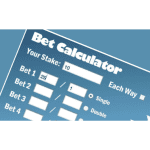Understanding the Basics of a Betting Spread
A betting spread in sports refers to the handicapping process where a sportsbook sets a margin of points that one team is favored to win by over the other team. This margin aims to create a more balanced betting field by giving the underdog some advantage. It is a popular way for sportsbooks to entice bettors to wager on both sides of the matchup, increasing their chances of making a profit regardless of the outcome.
The point spread is essentially a way to level the playing field between two teams of differing abilities. For example, if Team A is favored by 7 points over Team B, Team A must win by more than 7 points for a bet on them to pay out. On the other hand, if Team B loses by fewer than 7 points or wins the game, a bet on them would be successful. Betting spreads are prevalent in various sports like football, basketball, and hockey, providing bettors with a strategic and engaging way to wager on sporting events.
Key Components of a Betting Spread
Point spread betting is a popular method used in sports gambling to level the playing field between teams of unequal strength. It involves assigning a certain number of points to the favorite team and deducting the same number of points from the underdog. This is intended to attract balanced betting interest from both sides and to make the outcome of the game more unpredictable.
In a betting spread, one key component is the favorite, which is the team expected to win the game. The number of points assigned to the favorite represents their handicapped score. On the other hand, the underdog is the team expected to lose, and the points deducted from their final score reflect their underdog status. Understanding these components is essential in interpreting the betting spread and making informed decisions when placing bets.
Interpreting the Numbers in a Betting Spread
When looking at the numbers in a betting spread, it’s essential to understand what they represent. The numbers typically consist of a positive or negative integer, indicating the points that the favorite is favored to win by or the underdog is expected to lose by. For example, a spread of -7.5 means the favorite is favored to win by 7.5 points, while a spread of +3.5 means the underdog is given a 3.5-point advantage.
In addition to the numerical value, the numbers in a betting spread also reveal valuable information about the matchup. A larger spread indicates a wider gap in perceived skill between the teams, while a smaller spread suggests a closely contested game. It’s important to consider the context of the spread, including factors such as team performance, injuries, and recent form, to make an informed decision when placing a bet.
Identifying the Favorite and Underdog in a Betting Spread
When looking at a betting spread, it’s important to identify the favorite and the underdog. The favorite is the team expected to win the game and is indicated by a negative number next to their name on the spread. On the other hand, the underdog is the team expected to lose and is shown with a positive number next to their name. By understanding which team is the favorite and which is the underdog, bettors can make more informed decisions when placing their bets.
Identifying the favorite and underdog in a betting spread is crucial for bettors to gauge the perceived strength of each team in the matchup. The favorite is typically the team with a higher likelihood of winning, as determined by oddsmakers. Conversely, the underdog is seen as the team with a lower probability of winning the game. Recognizing these distinctions helps bettors evaluate the risk and potential reward associated with betting on either the favorite or the underdog in a given matchup.
Analyzing the Point Spread in Relation to the Game
When analyzing the point spread in relation to the game, it is crucial to pay attention to how the spread is set and what it signifies. The point spread is a way to even out the playing field between two teams of varying skill levels. By adding or subtracting points to the final score of each team, oddsmakers aim to attract equal betting action on both sides of the bet.
Furthermore, the point spread can be a reflection of various factors such as injuries, team performance, and matchups. It serves as a prediction of the margin of victory or defeat in a game. Bettors need to consider not only the point spread itself, but also how it aligns with their own analysis of the teams and their chances of covering the spread.















